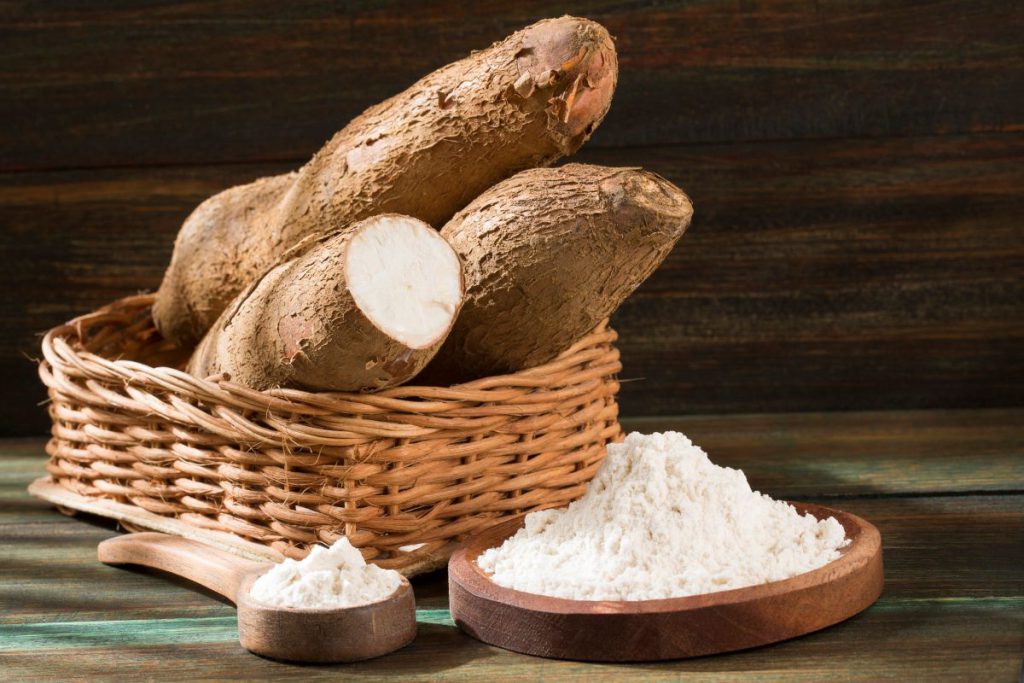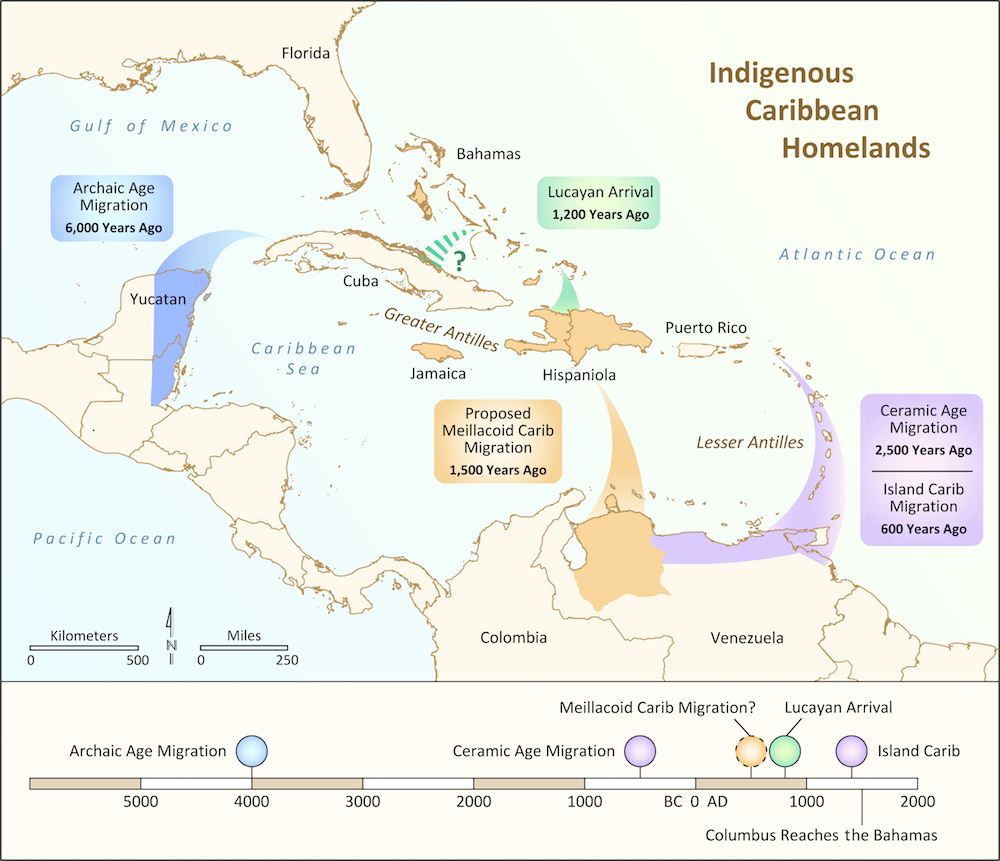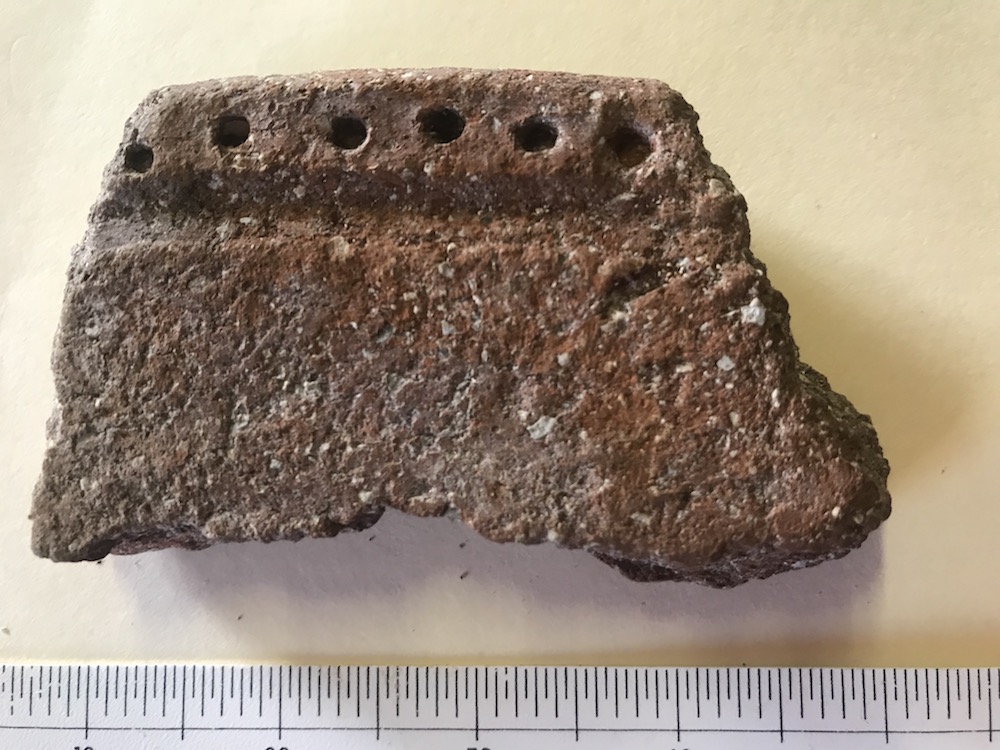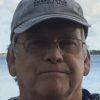Who First Made the Caribbean Home?
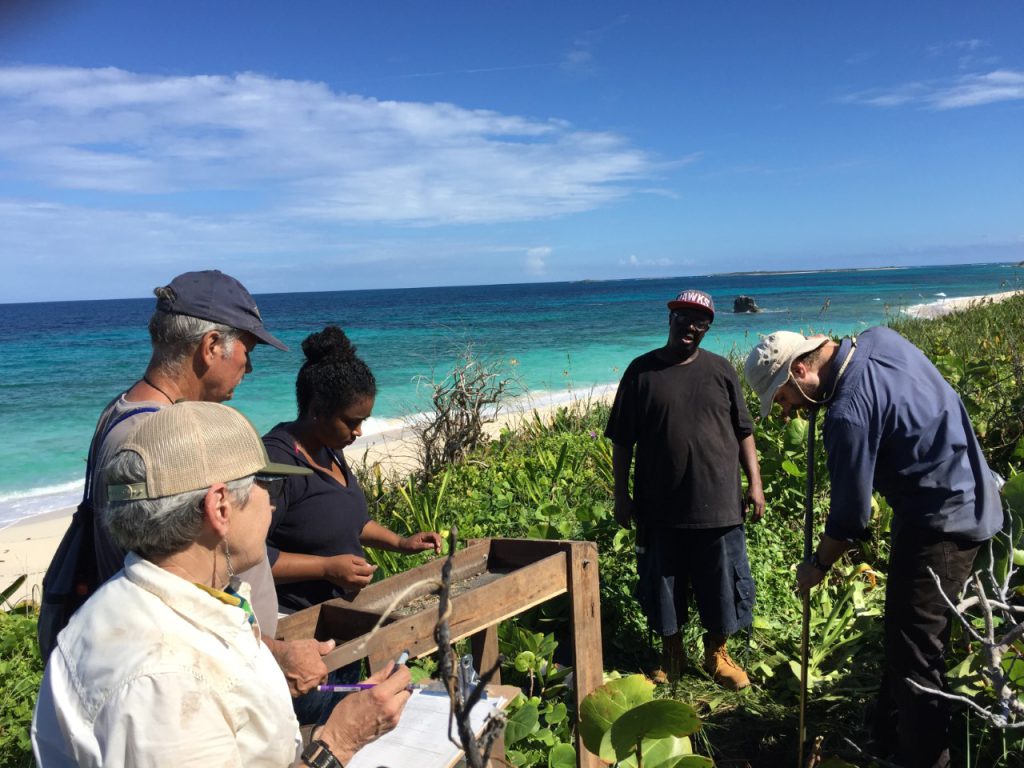
Locals in the Bahamas will tell you the best time for beachcombing is after a big storm. There’s a rumor, unconfirmed, that on one such beach trip, people found gold coins. And on one such October day in 2015, in the aftermath of Hurricane Joaquin, three Long Island locals found two human skulls.
The skulls were from Lucayans, the first Indigenous people of the Bahamas, who lived in the region from about 800 to the early 1500s. The foreheads were purposely flattened, which was a common practice of this group. Additional bones peeked out from a nearby sand dune. The beach explorers finished their walk, headed home, and contacted the Bahamas National Museum’s Antiquities, Monuments, and Museum Corporation (AMMC), the governmental agency responsible for archaeology.
Eventually, in 2016, I got a call in my office in Florida. “Can you come to the Bahamas next week?” The voice on the other end of the phone belonged to Keith Tinker, the AMMC’s director at the time. He explained that there was a small window of opportunity. This was the first Indigenous sand dune burial ever reported in the Bahamas, and the people who discovered it would only be on the island for another week. We needed their help to relocate the burials.
Hurricane Matthew battered the Bahamian capital of Nassau three days after the call, and I assumed that the trip was off. But at week’s end, I was driving from the airport to the AMMC office in Nassau, past broken trees and palm fronds piled on the sides of flooded streets. Power was still out across much of the island of New Providence. The next morning, I joined my friend and colleague Michael Pateman, then chief archaeologist at the AMMC, to take a flight to Long Island.
Pateman and I excavated two adjacent burial areas. The first held an adult male buried face down with his arms bound behind his skull. The second had a double burial: an adult male buried face down directly on top of a tightly bundled adult female. She may have been wrapped in a hammock, which was not preserved. Her hands and feet had been removed at the time of her death and had been repositioned, with her right hand covering her face.
These were the first Lucayan burials ever excavated from a sand dune. Almost all of the human remains encountered previously were in caves, caverns, or sinkholes. The reasons for different ways of burying the dead, including the choice of different locations and the manner in which they were buried, are a mystery.
There were no cultural remains such as pottery or tools with the burials, so we decided to look more broadly in the vicinity for hints of why these people were buried in the dunes. We devoted the next two field seasons, in 2016 and 2017, to looking for evidence of Lucayan activities.
Through this research, we documented, for the first time, campsites on the Bahamian Atlantic coast; long-term changes in the coastline; the use of earth ovens for preparing meals; the remnants of the first starch grains on tools found in this region, from maize, manioc, and Zamia (a local edible root). Across the island more generally, we found evidence that Lucayans moved around a lot, pursuing what has been called “casual cultivation.” This means the vegetation is cut, allowed to dry, and then burned. Crops are then grown for a few years, after which gardens are abandoned to fallow and new gardens are cleared. This was a different way of life than the more sedentary agricultural economy attributed to the Indigenous Taíno during this same time period on the neighboring Greater Antilles islands.
As an archaeologist, I have spent more than 40 years studying the Caribbean—the Greater Antilles, the Lesser Antilles, and the Lucayan islands (which includes the Bahamas and the Turks and Caicos Islands). The Lucayans have no living representatives, but my colleagues and I always acknowledge and thank the ancient individuals whose skeletal remains we have analyzed, the present-day people who have an Indigenous legacy, and Caribbean-based scholars who have been centrally involved in our work. The past is part of our collective memory. We owe everyone’s ancestors the same respect in death as in life.
Our recent work has looked at the region in-depth from both an archaeological and genetic perspective, highlighting how teams from both disciplines can productively work together and complement one another’s perspectives. We have looked at where the Lucayan people came from, and, therefore, how, when, and from where the Bahamian islands were first settled. There is great interest in these questions because the Bahamas is where Christopher Columbus first made landfall in the Americas: The Lucayans were the first people encountered in the Americas, and the first to be exterminated.
But who were they? To answer that question, we must first tackle the mystery of where and when the Lucayans first reached the Bahamian islands.
Previous independent studies of teeth and facial characteristics found significant differences between the physical appearances of two groups of people who entered the Caribbean at different times. These groups also introduced different technologies into the region.
Those two studies indicated that the first people came during an Archaic Age migration, beginning around 6,000 years ago. These individuals are believed to be from Central America based on stone tool types. Despite the fact that there is no evidence these Archaic Age migrants ever reached the Bahamas, our new archaeological data from the 2016–2017 field seasons hinted at similarities between the Lucayans and this group in terms of characteristics such as mobility, cooking, and farming practices.
The second group of migrants, who intensively used ceramics and practiced agriculture, moved into the Caribbean during a Ceramic Age migration of people from eastern South America that started about 2,500 years ago. Radiocarbon dates suggest that they settled first in the more eastern islands of Puerto Rico and the northern Lesser Antilles and later in Hispaniola, Jamaica, eastern Cuba, and the Bahamian islands.
One expression of these two waves of migration is a noticeable difference between the facial appearance of people living on Cuba and Hispaniola throughout these periods.
The Lucayans arrived about 1,200 years ago and were not part of either of those studies on teeth or facial characteristics. So, we turned to forensic anthropologist Ann Ross to see whether Lucayan skulls were more similar to those from Cuba or Hispaniola. It seemed like a straightforward way of addressing where the Lucayans came from. But the answer surprised us.
Ross joined me in Nassau, where she digitized in 3D the eight complete Lucayan skulls in the Bahamas National Museum collections—including the three from the Long Island dunes. The results showed that their faces were significantly different from Archaic Age people from Cuba. Instead, the facial characteristics of the Lucayans were most similar to individuals from Hispaniola and Jamaica, but in addition, this cluster was significantly different from individuals who lived in Puerto Rico. The differences raised the possibility that Hispaniola and Puerto Rico had been settled by different peoples: people who could easily be distinguished from one another, face to face.
The cultural material that the Hispaniola/Jamaica/Bahamas cluster had in common was a unique type of pottery called Meillacoid, which some researchers have noted bears striking similarities to the “Carib” pottery found in western Venezuela. Our findings are consistent with the idea that Carib people moved from western Venezuela into Hispaniola around 1,500 years ago: a so-called Meillacoid Carib migration.
Our results challenge the conventional wisdom, which holds that there was only one Carib population in the Antilles at the time of Spanish contact in 1492 (about 600 years ago) and that they lived only in the Lesser Antilles, as far north as Guadeloupe. So, some of our colleagues dispute the proposed Meillacoid Carib migration. However, these scholars’ refutation ignores both Spanish descriptions of Caribs in the Greater Antilles (beginning with Columbus in 1492) and the cultural diversity observed at archaeological sites in the Greater Antilles west of Puerto Rico beginning 1,500 years ago.
While we were doing this work, other researchers were embarking on a massive ancient DNA study of the Caribbean.
The AMMC’s Pateman (now at the AEX Bahamas Maritime Museum), along with molecular anthropologist Miguel Vilar and numerous colleagues, looked at 28 Lucayans, including the individuals from Long Island. Their samples were added to a larger pan-Caribbean ancient DNA project initiated in geneticist David Reich’s lab at Harvard Medical School and evolutionary anthropologist Ron Pinhasi’s lab at the University of Vienna.
In the end, researchers analyzed a wealth of genome-wide information from 263 ancient individuals (including 174 never before studied). The genetic results supported the idea that there were two waves of migration of genetically distinct people into the Caribbean, one during the Archaic Age and the second initiating the Ceramic Age.
The Harvard/Vienna team grouped individuals solely on their genetic similarities (that is, blinded to their geographic locations or to the archaeological population to which they belonged). They first identified groups of individuals (called “clades”) who shared broadly similar genetic signatures and then further divided these clades into more specific groupings called “subclades.” When they began to interpret how these clades and subclades matched up with cultural data, the team invited me to consult with them on a Zoom meeting.
Researchers need to be open to all the lines of evidence, without trusting one above all others.
Working in a museum natural history department populated mostly by biologists, I have had years of experience with the different ways that archaeologists and biologists tend to interrogate and communicate data. We sometimes mean different things by the same words. Take “kinship,” for example. While biologists define kinship on the basis of genetic relationships, anthropologists recognize kinship as culturally constructed relationships. This difference can cause confusion or conflict but can be overcome if there’s sufficient communication about what everyone means.
Speaking of kinship: In the current research, long strands of identical genetic code inherited from shared ancestors were analyzed to identify individuals who were “genetic cousins.” That doesn’t mean they were cousins in a Western sense (the offspring of a parent’s sibling). Rather, these individuals had common ancestors in the not-so-distant past. Nineteen pairs of these genetic cousins were identified. Among the Lucayans, one of the individuals from Long Island had a “cousin” in Cuba. Other Lucayans had “cousins” in the Dominican Republic and Puerto Rico, and there are similar connections between islands within the Bahamas. These genetic relationships document just how biologically interconnected people were during the Caribbean Ceramic Age.
There are clear genetic (and cultural) differences between Archaic Age and Ceramic Age populations in the Caribbean. But within the Ceramic Age populations, there are high levels of genetic similarity among a great majority of individuals living in the Lesser Antilles (as far south as Saint Lucia) all the way to the northern Bahamas over a period of 1,500 years.
For each and every clear cultural difference observed across the Caribbean ages—as seen, for example, in dramatic changes in pottery styles—some archaeologist somewhere has explained the change as resulting from a new migration (including our proposed Meillacoid Carib migration from Venezuela to Hispaniola). But the recent ancient DNA study shows that changes in pottery styles were not accompanied by genetic changes.
Read more from the archives: “How Black Caribbean Communities Are Reviving an Ancestral Dance Tradition.”
In a gallant effort to appease me, the genetics team, especially Kendra Sirak at Harvard and Daniel Fernandes at Vienna, searched for subtle evidence of genetic variation that might signal a new genetic component introduced by a Meillacoid Carib migration. The level of resolution they achieved was amazing, but they found no evidence for a separate migration of a genetically distinct group. Perhaps there was no such migration, or perhaps it simply doesn’t show up in the genetics.
The stories told by genetic evidence don’t always match up with the stories told by archaeology or Indigenous narratives. In seeking the truth, researchers need to be open to all the lines of evidence, without trusting one above all others.
The disciplines of archaeology, anthropology, and genetics are coevolving. At times in the past, it has seemed that archaeologists asked questions that genetics couldn’t answer, and geneticists provided answers that archaeologists didn’t understand. This is less and less the case. By all accounts, ours was an extremely successful collaboration. The key was seemingly constant communication—not only to ensure that the words we chose carried the same meaning for archaeologists and geneticists, but especially in terms of contextualizing our data.
Finally, we needed to be open to the unexpected. As part of all this work, geneticist Harald Ringbauer at Harvard developed a novel method for calculating population size. He calculated that the Indigenous Taíno population of Hispaniola and Puerto Rico numbered in the tens of thousands at the time of Spanish contact, in sharp contrast to prevailing estimates in the hundreds of thousands or even millions. It was tempting for me to outright reject the lower numbers and simply claim that there was a problem with his method. However, it is these unanticipated discoveries that can advance scientific inquiry or spur independent methods of analysis. We now need to reexamine the assumptions on which the larger population estimates are based. Either way, the decimation of the Taíno people by European disease, war, and enslavement in the 1500s remains among the darkest stains in human history, regardless of the absolute numbers.
We humans are not simply the sum of our parts. Genetic and archaeological evidence creates a meaningful and fascinating collection of some of those parts: We now have an expansive genome-wide portrait of the people who lived in the pan-Caribbean over the past 6,000 years. Yet researchers’ questions are often more subtle than our data.
We have a substantial number of points on the map. But this map needs to be filled in—in time, space, and interpretation—to connect the dots across this enormous sea to reveal the interconnections of Indigenous communities across the Caribbean world.

































